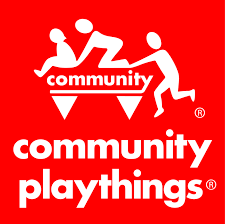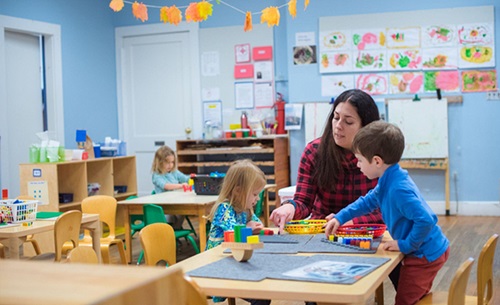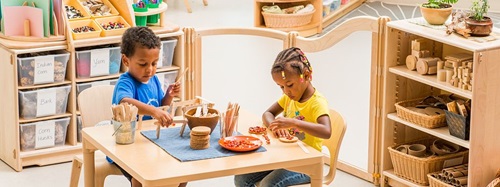The Teacher's Role in the Emergent Curriculum
| April 2025Emergent early childhood education guides curriculum with the following two principles: teachers understand child development proficiently, and our planned interactions with children are based on our knowledge of their skills and interests. When these principles serve as the foundation to our daily practices with young children, we are empowered to create experiences for students that are meaningful, intentional, and supportive of continued positive development. For an in depth look at how to implement an emergent early childhood program, check out Guiding Principles of Emergent Early Childhood Education.
Teachers must play several critical roles to ensure the success of an emergent curriculum. These include acting as a:
- Scholar
- Interior Designer
- Project Manager
- Storyteller
- Evaluator
Let’s take a closer look at each of these roles and how they shape the learning experience.
Scholar
As educators, our knowledge, understanding, and continuous study of child development is critical to our practice. Young children deserve a learning environment that shows respect for who they are as individuals and their unique stages of development. In Education Before Five: A Handbook on Preschool Education, Harriet Cuffaro (1977) emphasizes that “development is not something that happens to a child but is the result of the child’s interactions in the social and physical world.”
When we base our decisions and interactions on our understanding of child development, our work with young children becomes more meaningful and valuable. For example, applying this knowledge in daily practice helps us recognize the importance of giving children concrete warnings before transitioning to the next activity. We will communicate at a child’s eye level, being sensitive to any protest while understanding that the simple play that a child engages in is their current life’s work and holds immense importance to them. With teachers fully present and connected to a student's emotional and cognitive state with empathy and compassion we create a learning environment in which children thrive.
Interior Designer
The Reggio Emilia philosophy characterizes the learning environment as “the third teacher” due to the essential role it plays in facilitating a child-centered, developmentally appropriate, culturally representative, and emergent educational program. To create a meaningful environment, teachers design a space that reflects the diverse backgrounds of students, provides ample room for purposeful work, fosters warmth and belonging, and encourages active exploration.
Harriet Cuffaro (1995) explains the great progressive education theorist John Dewey’s perspective of the learning environment in her book Experimenting with the World: John Dewey and the Early Childhood Classroom, stating “the fundamental function of the physical space of the classroom is twofold: to create those conditions that will evoke each child’s potential and capacity, and, further, will facilitate interactions that promote and encourage the communication necessary to create community.”
Cuffaro (1995) goes on to say, “Materials are the texts of early childhood classrooms. . . . If materials are tools for learning and means for obtaining knowledge, which materials are chosen to equip the early childhood classroom becomes a matter of significant consequence.”
Project Manager
A teacher uses their understanding of child development and the chosen materials to actively engage in play with students. By asking open-ended questions, they help deepen the child's understanding. At the same time, they observe and interact genuinely to learn more about each student. This insight allows the teacher to guide and shape the learning process effectively.
Additionally, classroom management tools, such as choice boards, must be in place to support small group work, self-management, and a constructive community of learners. The teacher oversees the effectiveness of such systems, reinforcing their structures along the way as needed.
Storyteller
The Reggio Emilia approach to emergent education highlights the importance of reflection. This is best demonstrated through the practice of making learning visible, where educators document and revisit the learning process to deepen understanding. Beginning with reflective discussions with students about the work that transpired, a teacher creates the opportunity to tell a story of learning and development to families. Then, using a collection of work samples, photographs of students interacting with materials and each other, and a narrative describing the value of the materials and the work that occurred, teachers tell a story about each child’s development. When displayed at a child’s level, these documentations of learning support children’s continued reflections of their work which fosters continued development.
Evaluator
Lastly, teachers supporting emergent learning must remain open, flexible, and attuned to changes needed in the environment. When teachers take time to reflect on how students interact with their environment and each other, they can better understand when, where, why, and how to make adjustments. These insights help them adapt the learning environment or routines in ways that support ongoing growth and development. Cuffaro (1995) suggests asking ourselves questions such as “What kinds of interactions do I want to support and promote? What invitations do I wish to extend to children? What qualities do I nurture with these experiences?” By asking specific questions systematically throughout our interactions with and observations of children, we learn valuable information about the experiences that should emerge next to support a thriving learning environment.
Conclusion
A teacher’s role in the world of emergent early childhood education is multi-layered, complex, and constantly evolving, much like the curriculum itself. Yet when educators understand and practice these five aspects of their role in the classroom, the possibilities for children are endless. John Dewey (1938) states, “The teacher’s suggestion is not a mold for a cast-iron result but is a starting point to be developed into a plan through contributions from the experience of all engaged in the learning process.”
Teachers in emergent learning environments have an exciting opportunity to foster communities of children that play an active role in their exploration of the world, constructing knowledge from experiences they helped to shape, while giving each experience significant meaning and value to every child’s early childhood education.
References
Boegehold, B.D., Cuffaro, H.K., Hooks, W.H., & Klopf, G.J. (Eds). (1977). Education Before Five: A Handbook on Preschool Education. Bank Street College of Education.
Cuffaro, H.K. (1995). Experimenting with the World: John Dewey and the Early Childhood Classroom. Teachers College Press.
Dewey, J. (1938). Experience and Education. Macmillan Publishing Co.










